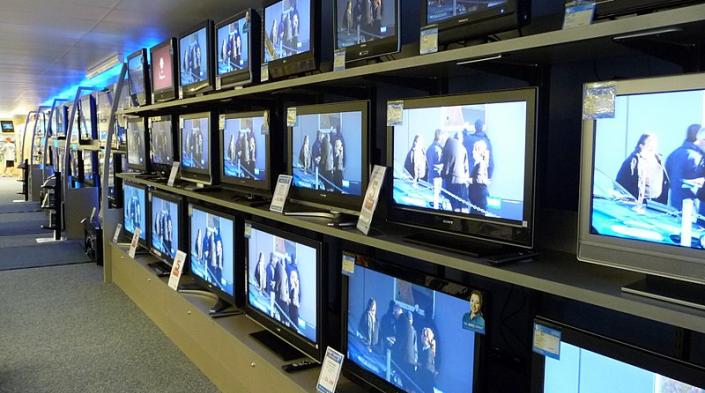
Publicado el
Actualizado por última vez en
Last week I wrote about what digitalisation may be doing to creativity. This week, a look at what it may already have done to the way that we ‘consume’ creative culture.
An opening vignette
Something very traditional happened on British television last weekend. Just short of thirteen million people – one fifth of the population – tuned their TVs at the same time to watch the final episode of a BBC crime serial called Line of Duty. That’s the biggest TV audience for any TV drama in thirteen years.
What’s more this series – set in the murk of corruption and anti-corruption in policing – has been a fixture in British people’s conversations and in the British press over the past six weeks. Who is the mystery arch-villain? What will become of the series’ heroes and anti-heroes? Will the denouement match the weekly cliffhangers that there were in previous series and previous episodes of this one?
This kind of ‘event TV’ doesn’t happen much these days, and I’ll offer an explanation later for why it did this time.
It’s also made me think about what’s changed about the ways that we consume our culture – music, art, TV, cinema, literature – in the digital society: about what we’ve gained from this and where it’s not all gain.
First some (personal) history; then some thoughts on what has changed; and finally a pair of questions we might ask.
How it used to be
I’m 65 and I grew up in Britain. Age and nationality affect experience of culture. Mine would be different if I were older/younger or had grow up elsewhere. Much of what follows is seen through my lens, though most people in most places have experienced some or all of the changes I’ll describe.
How were things for me, then, when I was small?
We had radio; and television from the time that I was five, but they were very different in character from today’s multichannel multiverse. In my first decade, British radio was just the BBC – three channels: one news, one popular music, one classical – and ‘pirate’ pop stations broadcasting offshore. There were two TV channels, both black and white, and in the evenings only – one BBC and one commercial.
TV audiences, though, were very high. Most people watched most evenings. Kids talked about the kids’ shows they had seen next morning when they got to school; adults shared their views of soap operas and news around the workplace. As things were shown just once and then were gone, there was a great deal of ‘event TV’.
Music came from the radio – dictated by the playlists set by radio producers – and on vinyl records – expensive, fragile, and (carefully) lent and borrowed. Almost all was from the UK or America. The experience of music ownership and listening was very different from the massive, free or near-to-free access available today through streaming services. What we owned we cherished; our tunes were not disposable.
Current films were shown in cinemas. TV stations had a few, mainstream, at earliest appearing six months after their debut on the big screen - and that was all the choice you had unless you happened to be near an arthouse cinema in a university town which might show some old or foreign-language movies. Our movie choice was dictated by cinemas and broadcasters. Even video rentals weren’t around till I was over twenty, let alone services like Netflix.
And, my last example, art: that came in books and (occasionally) exhibitions that local museums brought into my town. To see, say, Van Eyck’s great altarpiece I’d have had to go to Ghent in Belgium and peer upwards trying to make out the details for which he’s renowned. Today I can explore it online in minutest detail.
So what’s been gained?
There are really major changes underlying this, and mostly they have benefited cultural consumers. I’ll suggest four changes that we’ve seen thanks to digitalisation, suggest four implications of these, and end with the need to understand cultural as well as political, economic and social changes that arise within the digital society.
First, access to culture has enormously increased. Most people in most countries now have access to multi-channel TV (or at least radio), with far more ‘content’ available, of many types. Much of what’s on TV and radio is now in niches (National Geographic, Jazz FM, the Shopping Channel) that provide more tailored aural wallpaper than I had in my young days. Vast movie libraries are now available online: it’s harder to find a movie (however old, however rare) that’s not available than one that is.
Second, the nature of that culture’s more diverse. I’ve access now to music, movies, art and literature from almost any culture, rather than having to make mostly do with what’s come from my own. The world’s diversity’s become much more explorable – not just geographically but in terms of politics and social norms, of gender, race and sexuality.
Third, curation’s changed. When I was young what I could see/hear/read was determined largely by what was available in my locality – curated by radio and TV producers, cinema owners, music promoters, local art galleries, librarians. Today I can find almost any TV or cinema I want on Amazon Prime or Netflix, music on Spotify, YouTube or Amazon, art through online galleries and intermediaries like Google Arts and Culture. Recommendation algorithms now play the part that once was played by word of mouth, by critics, by librarians.
Fourth, as a result, cultural experience has become more individualised. Instead of borrowing each other’s albums, we curate personal playlists. Instead of listening to record players, we plug into our headphones. Instead of sitting as a family round the TV, we watch YouTube and other videos on laptops and computers.
And so to downsides
Much of which is very positive, but changing cultural consumption also raises important questions about how individual consumers, artists and society at large experience change. Four instances of these.
First, increased access to culture and to cultural diversity does not mean that individuals consume more critically or that they experience greater diversity. Recommendation algorithms tend to point users at what is most familiar (thereby generating revenue for platforms). As with politics, so with culture, this can tend to reinforce existing preferences and prejudices rather than diversifying them. More content can mean content that’s more focused but is less diverse.
Second, digitalisation’s changed the economic model faced by artists. This is particularly true of musicians, who earn much less from streaming than they did from album sales and who (pre-COVID) came to rely much more on live performance (as they’d done before mass record markets). But it’s true in other media as well, opening up new earning opportunities while closing others down. To be financially successful, artists have to be more platform aware, and that in turn affects their creativity.
Third, a massive increase in the content that’s available puts more pressure on artists to grab attention. Much greater choice means that consumers give new things less chance to make an impression on them: you can always click on to the next video on YouTube, the next channel on TV, the next track on the playlist. Today's television programmes repeatedly repeat points hat have been made already because viewers are ‘multi-tasking’ and channel-hopping. Individual songs have replaced albums as the main vehicle for music sales, changing the nature of the ‘statements’ artists make.
And fourth, there’s been a loss of the shared cultural experience. Time-shifting and binge-watching have broken most of the links between the time a TV programme’s broadcast and the time it’s watched. Only some programmes overcome that barrier because they’re very time-specific (such as sports events) or because people share the live experience by tweeting while they’re watching (such as some ‘reality TV’, initially Big Brother).
Line of Duty, I’d say, broke the barrier for drama here for four reasons. It resonated with its viewers (because of writing and production values); its producers barred binge-watching by making it only available in individual episodes and at specific times; they managed to keep its secrets secret till the time of broadcast. And, I'd say, they also found that there is still residual demand for the shared experience that’s represented by event TV.
Where does this lead?
Writing about the digital society tends to focus on change – what technology enables that wasn’t possible before (some positive, some negative). Where impact’s concerned, it tends to focus on the economy, on market opportunities (new services, new ways of providing goods and services), on public services (such as health and education) and, latterly, on politics (including mis- and dis-information).
But new technology also affects our broader cultural environment: the things we do for leisure, the way those things affect our attitudes and our relationships. It’s likely that they’ll change in ways we don’t expect. It’s possible – I touched on this last time – for them to be manipulated. And we should pay more attention to the way they’re changing because cultural norms shape society alongside politics and economics.
Image: Television for consumer's purchase, by Wags05 at English Wikipedia.


